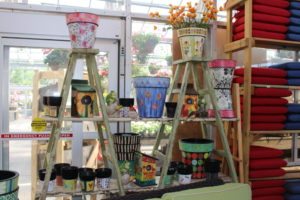Where Have All the Sales Gone?
You put up lights and sell cut trees and poinsettias at Christmas, stock lilies at Easter and violets at Mother’s Day, and host a Halloween open house. Holiday tie-in sales are working out pretty good for you, and you’re working them pretty good. Well, according to holiday statistics from the past few years, if you’re only marketing the top few holidays Christmas, Mother’s Day/Easter and Fall you’re probably missing out on substantial sales.
A 2002 consumer purchases study conducted by the American Floral Endowment (AFE) indicates that the top selling holidays for fresh flower and plant purchases are Christmas/Chanukah at 31 percent of the transactions and 30 percent of the dollar value; Mother’s Day at 24 percent of the transactions and 27 percent of the dollar value; Easter/Passover at 18 and 13 percent, respectively; Valentine’s Day at 17 and 22 percent, respectively; and Thanksgiving at 5 percent for both transactions and dollar value. Add to that a 2002 study from the National Retail Federation (NRF) showing that Halloween home decorating ranks second only to Christmas, with 50 percent of respondents planning to decorate their homes, and you have some pretty substantial money makers that are not counted among the “top” floral holidays.
More impressive than the numbers on these fairly major holidays is the anecdotal evidence on “lesser” holidays. Fourth of July, Father’s Day, Thanksgiving, Memorial Day/Labor Day unofficial sales reports from other industries show that these could very lucrative holidays for the green industry as well. For example, many clothing retailers count Memorial Day weekend as one of their major selling weekends. Research is currently underway to determine just how important these holidays are to retail as a whole, enabling garden center retailers to better judge which opportunities will be most lucrative to compete in.
Product Types
Some holidays, such as Valentine’s Day, Mother’s Day and Easter have become identified with a certain gift or crop. You buy roses for Valentine’s Day, ties for Father’s Day and candy at Halloween, but statistics show that there is a much larger floral and gift potential associated with many of these holidays than what might be assumed by this association.
The AFE Consumer Tracking study revealed that 20 percent of purchases made for Valentine’s Day are flowering and green houseplants and outdoor bedding and garden plants, and 39 percent of the flowering houseplants purchased for Easter/Passover were crops such as African violets, azaleas, petunias and impatiens instead of Easter lilies. In addition, NRF data shows that almost 36 percent of consumers want to shop specialty stores for mom, where the average purchase is $97.37.
The Next Generation
One of the most appealing aspects of holiday marketing is that it allows you to target an entirely new client base. Everyone is familiar with floriculture’s core market descriptor of women aged 35-50 with an annual income north of $50,000-75,000, but statistics show that holiday purchasers are often men and younger women or men.
The AFE Consumer Tracking Study shows that 62 percent of Valentine’s Day purchases are made by men, and the NRF study estimates that men spend more than three times as much on Valentine’s Day purchases than women, at $125.96 and $38.22, respectively.
More exciting, however, is the number of teenagers and young adults that celebrate holidays. The NRF study revealed that consumers aged 18-34 are leading the purchasing charge at Halloween, spending an average of $67 each on Halloween-related candy, costumes and decorations, $23 more than the average consumer and $5 more than consumers with children. With a total projected sales of approximately $6.9 billion, the “twenty-something” crowd carries the brunt of holiday sales.
The challenge for most retailers will be marketing to two populations, men and young adults, not typically targeted by garden centers and an age group more accustomed to shopping in malls, on-line and at discount stores. Advertising in high school publications, at sporting events and in sections of the newspaper that serve these populations will be good places to start.
Using the Numbers
If statistics show the opportunities to tie in with many holidays throughout the year, they do not show how you are supposed to do it. After all, the garden center is not the first place people think to shop for Father’s Day or Halloween. Should you advertise heavily? Should you invest in items “traditionally” purchased for that holiday? How do you merchandise ties?
As with any venture, the smartest way to enter it is to ease in. Order some theme merchandise, scour the garden center for other items that tie in and go after the low hanging fruit. In other words, start by marketing to existing customers. If you have a mailing list or a newsletter, let your customers know that your garden center is a great place for decorations or gift items. Move display up front, and even outside if weather permits.
Just converting existing customers to holiday shoppers can create a substantial new revenue source. After sales begin to level, then you can decide if you want to go after the harder-to-reach customers.


















 Videos
Videos





